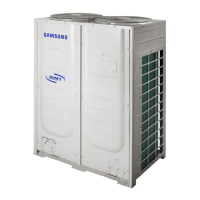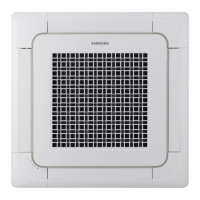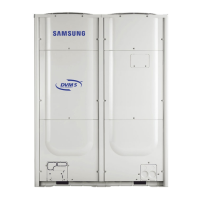36
English
Troubleshooting
Installation manual
8 Hang the indoor unit to the suspension bolts between
two nuts.
Rubber
Bracket
1
2
2
CAUTION
• Piping must be laid and connected inside the ceiling
when suspending the unit. If the ceiling is already
constructed, lay the piping into position for connection
to the unit before placing the unit inside the ceiling.
9 Screw the nuts to suspend the unit.
10 Adjust level of the unit by using measurement plate for
all 4 sides.
NOTE
• For proper drainage of condensate, give a 1° or less
slant to the side of the unit which will be connected
with the drain hose as shown in the figure. (The gap
between the lower end of the indoor unit and the
ceiling should be 12 mm or less.)
1° or less
Connection pipe
Connection pipe
Drain hose
Drain hose
NOTE
• AM071/112DNC**G** : The gap between the lower end
or less.
• AM140DNC**G** : The gap between the lower end of
or less.
1° or less
Wall
Performing the gas leak test
LEAK TEST WITH NITROGEN (before opening valves)
In order to detect basic refrigerant leaks, before recreating
the vacuum and recirculating the R-410A, it’s responsable of
installer to pressurize the whole system with nitrogen (using
a cylinder with pressure reducer) at a pressure above 40 bar
(gauge).
LEAK TEST WITH R-410A (after opening valves)
Before opening valves, discharge all the nitrogen into the
system and create vacuum. After opening valves check leaks
using a leak detector for refrigerant R410A.
Ceiling type (AM056DNC**G***)
Leak check
Big Ceiling type (AM071/112/140DNC**G***)
Leak check
NOTE
• The designs and shape are subject to change according
to the model.
Installation Procedure

